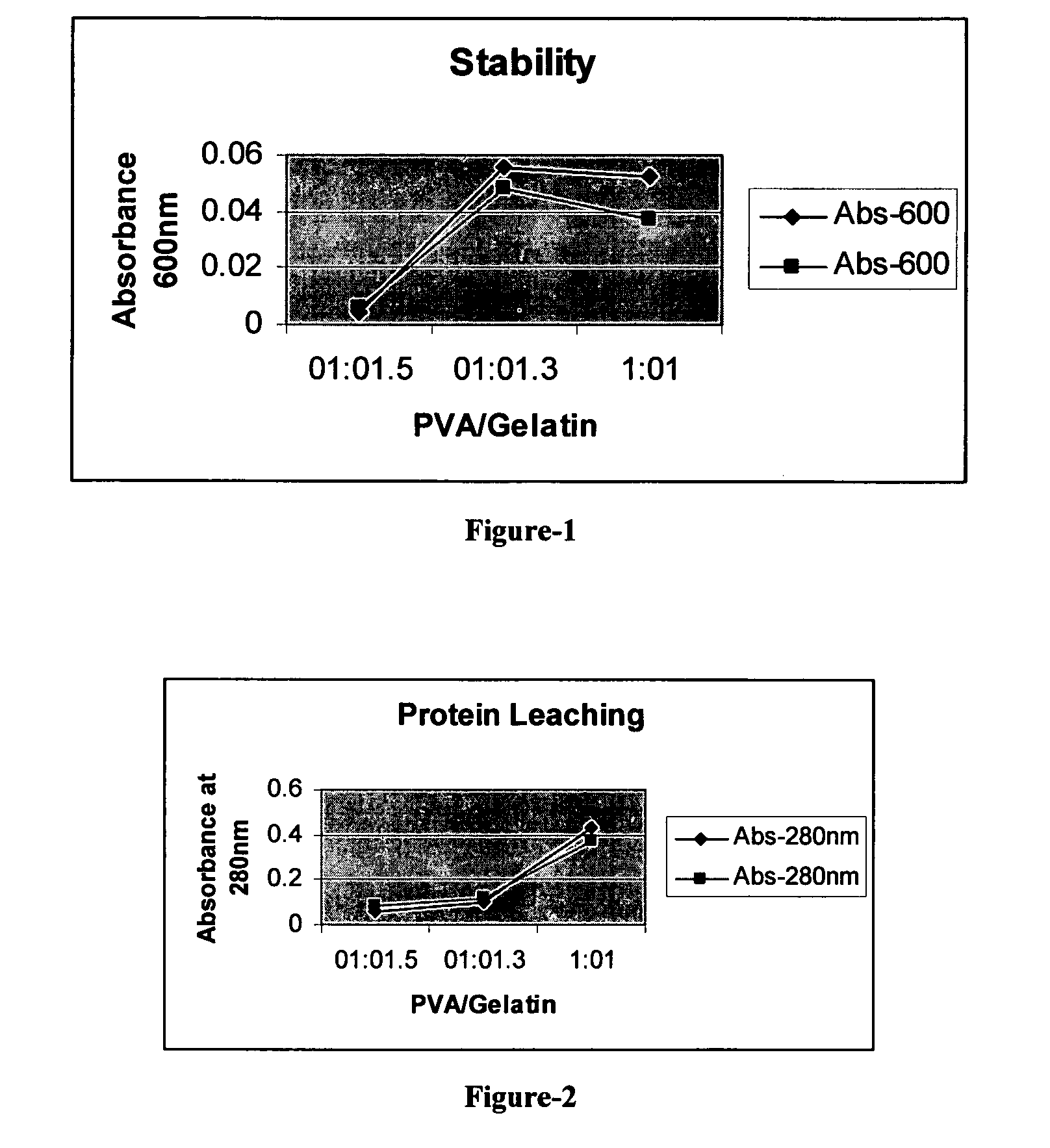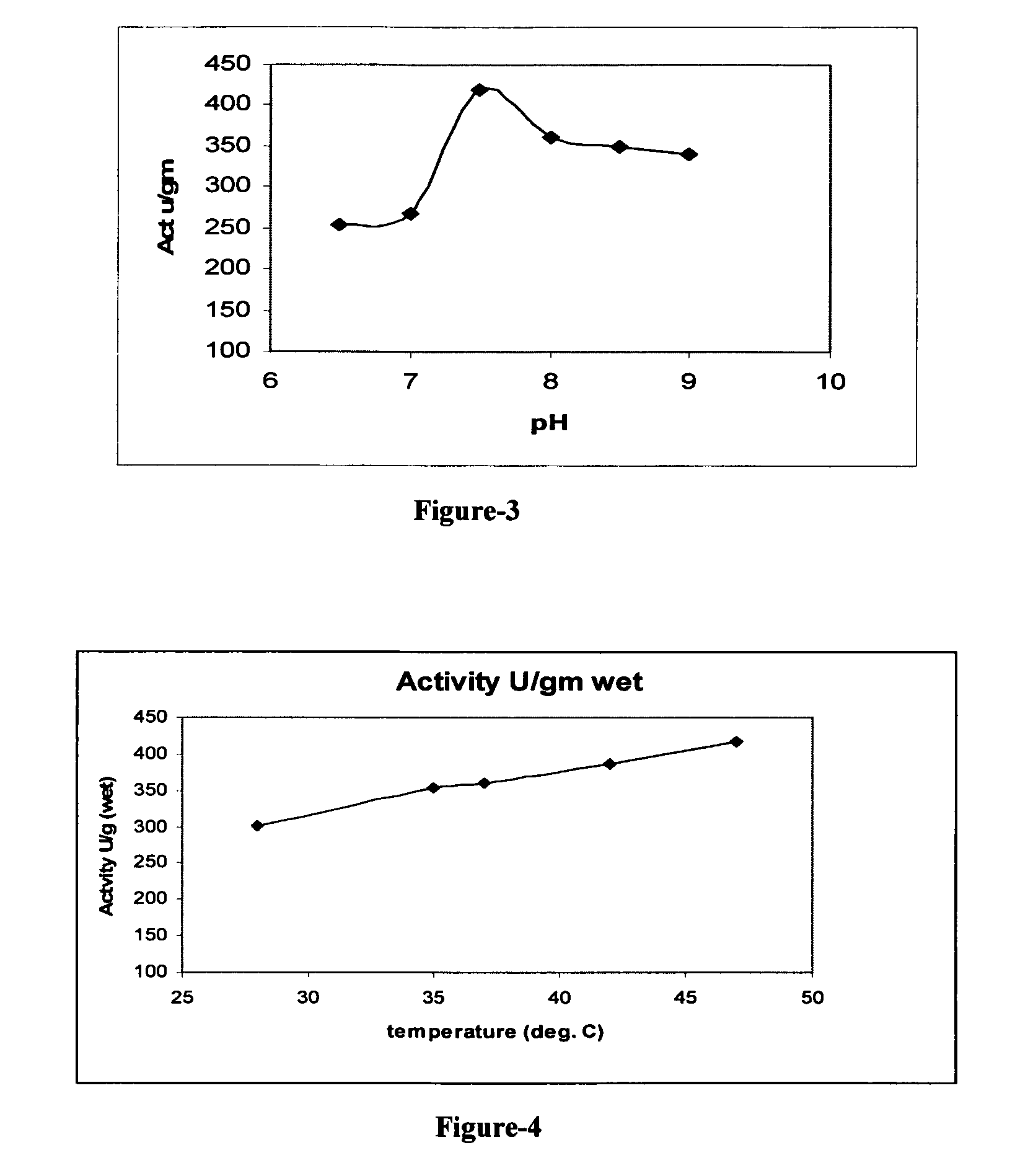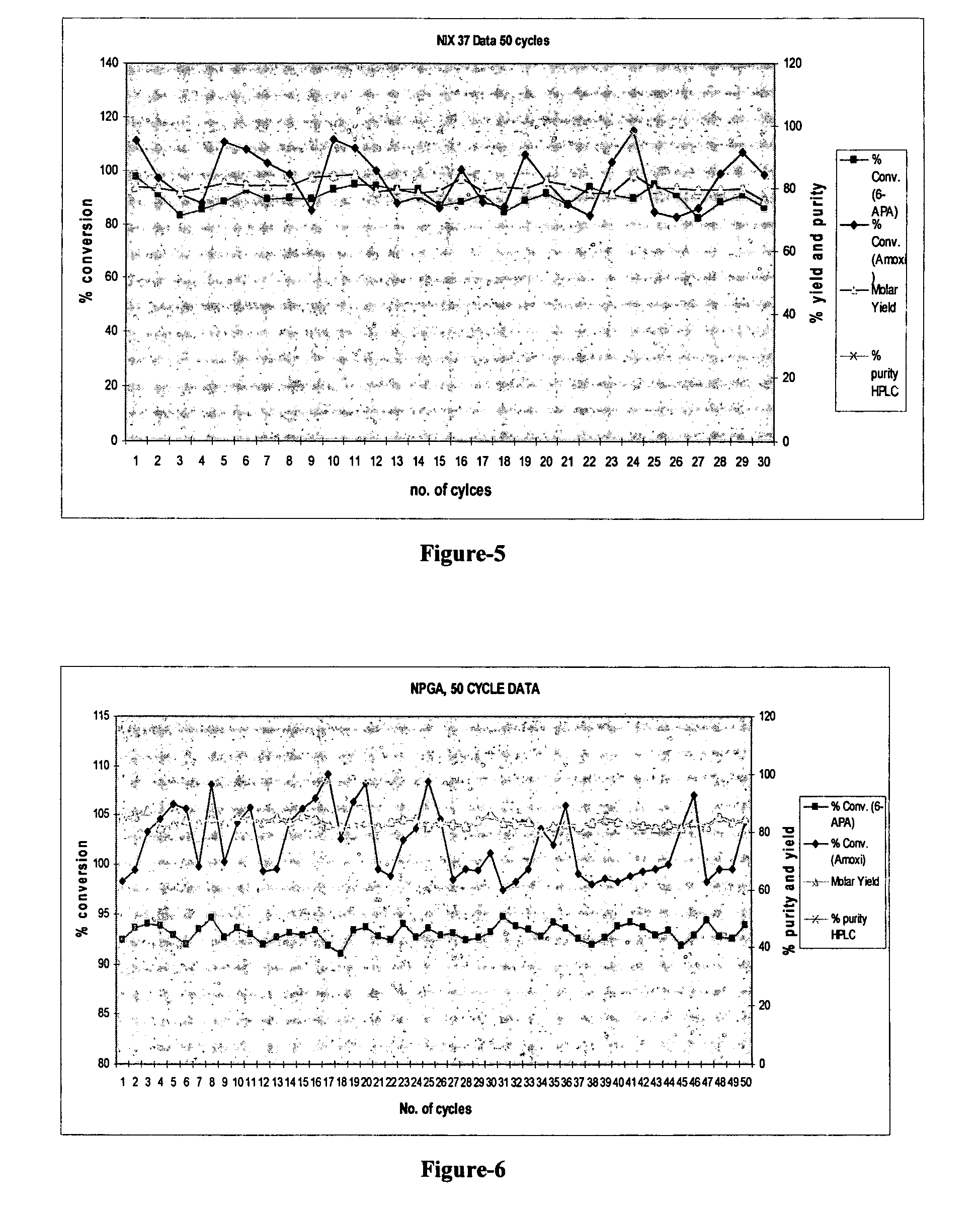Stable biocatalysts of penicillin acylase as gel aggregates and the process of manufacture thereof
a biocatalyst and penicillin acylase technology, applied in the chemical industry, immobilised enzymes, enzymes, etc., can solve the problems of easy desorbed and lost enzymes, hampered commercialization of many enzymes, lack of operational stability, etc., to prevent leakage of enzymes, stable biocatalysts, and high activity and operational stability
- Summary
- Abstract
- Description
- Claims
- Application Information
AI Technical Summary
Benefits of technology
Problems solved by technology
Method used
Image
Examples
example 1
Preparation of Enzyme Solution
[0094]Penicillin acylase enzyme was partially purified by precipitation with ammonium sulphate from solution of extracted proteins from rE. coli REIII (pKA18) at 5° C. and pH 7.5 and stirring for 30 minutes at 250 rpm followed by centrifugation at 4000 rpm at 5° C. obtain an enzyme precipitate. Ammonium sulphate equivalent to 20 gm per gm of proteins was used and protein was determined by Biuret reaction using BSA as standard. The resultant paste with dry weight in the range of 42-45% is diluted 1:1 with 0.1M sodium phosphate buffer pH 7.5.
Preparation of Polyvinyl Alcohol Solution (PVA) 10% w / w:
[0095]PVA (molecular weight 125000) was weighed in a pre-weighed glass container. Water was added to it and stirred in hot water bath to dissolve PVA till a clear solution was obtained.
Preparation of Gelatin Solution (10% w / w):
[0096]Gelatin (Bactogelatin, SD fine Ltd) was weighed in a pre-weighed glass container. Water was added to it and stirred in hot water bat...
example 1a
[0103]2000 gm of the enzyme paste as mentioned in example 1 was diluted with 12 l of 0.1M sodium phosphate buffer pH 7.5 (buffer prepared as in example 1). After dilution, Penicillin G hydrolytic activity was 464 Units per ml, the concentration of protein in the solution was 16.5 mg / ml. The enzyme suspension was stirred at 21° C. and pH of 7.5 was adjusted with 40% sodium hydroxide solution.
[0104]To this suspension, 527 grams per liter of solid ammonium sulphate was added slowly over 20 minutes by maintaining the pH to 7.5 by the addition of 40% sodium hydroxide solution.
[0105]To this 388 ml of glutaraldehyde (25% w / v solution) was added slowly in the course of 30 min maintaining the pH at 7.5 with 40% sodium hydroxide solution and temperature at 21° C. The resultant suspension was stirred for additional 1 hour (referred to as period of time of CLEA formation). The insoluble precipitate formed was washed six times with equivalent volume of 1M sodium chloride solution. The resultant ...
example 1b
[0106]2000 gm of the enzyme paste as mentioned in example 1 was diluted with 12 l of 0.1M sodium phosphate buffer pH 7.5 (buffer prepared as in example 1). After dilution, Penicillin G hydrolytic activity was 464 Units per ml, the concentration of protein in the solution was 16.5 mg / ml. The enzyme suspension was stirred at 21° C. and pH of 7.5 was adjusted with 40% sodium hydroxide solution.
[0107]To this suspension, 527 grams per liter of solid ammonium sulphate was added slowly over 20 minutes by maintaining the pH to 7.5 by the addition of 40% sodium hydroxide solution.
[0108]To this 243 ml of glutaraldehyde (25% w / v solution) was added slowly in the course of 30 min maintaining the pH at 7.5 with 40% sodium hydroxide solution and temperature at 25° C. The resultant suspension was stirred for additional 1 hour (referred to as period of time of CLEA formation). The insoluble precipitate formed was washed six times with equivalent volume of 1M sodium chloride solution. The resultant ...
PUM
| Property | Measurement | Unit |
|---|---|---|
| temperature | aaaaa | aaaaa |
| temperature | aaaaa | aaaaa |
| temperature | aaaaa | aaaaa |
Abstract
Description
Claims
Application Information
 Login to View More
Login to View More - R&D
- Intellectual Property
- Life Sciences
- Materials
- Tech Scout
- Unparalleled Data Quality
- Higher Quality Content
- 60% Fewer Hallucinations
Browse by: Latest US Patents, China's latest patents, Technical Efficacy Thesaurus, Application Domain, Technology Topic, Popular Technical Reports.
© 2025 PatSnap. All rights reserved.Legal|Privacy policy|Modern Slavery Act Transparency Statement|Sitemap|About US| Contact US: help@patsnap.com



